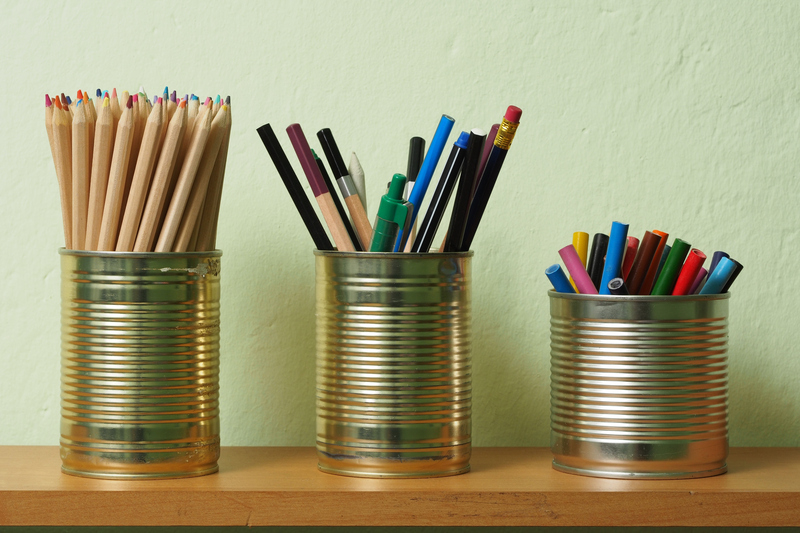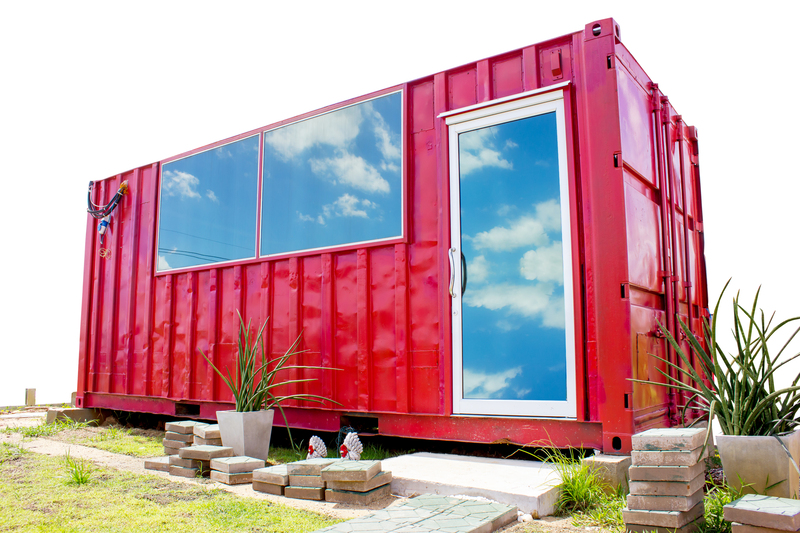Giving New Purpose to Unused Pots and Pans Through Recycling
In almost every household, there's a stash of unused cookware -- old pots, battered pans, and worn-out lids -- that collect dust at the back of kitchen cabinets. But did you know these unused pots and pans can find a new life through creative recycling? Recycling old cookware isn't just about being responsible; it's about sparking creativity and sustainability in the heart of your kitchen and beyond. In this comprehensive article, we'll explore innovative ways to repurpose, recycle, and upcycle old pots and pans, reducing waste while giving your items a meaningful second act.

Why Should We Recycle Old Cookware?
As society becomes more conscious of environmental impacts and sustainability, giving new purpose to discarded kitchenware is essential. Here are several compelling reasons why recycling unused pots and pans matters:
- Environmental Impact: Cookware is often made from metal, which takes centuries to decompose in landfills. Recycling or repurposing them helps conserve resources.
- Reducing Landfill Waste: Keeping bulky items such as old pots and pans out of landfills significantly reduces overall household waste.
- Resource Conservation: Metals like aluminum, stainless steel, and copper can be extracted and reused in manufacturing, decreasing the need for raw materials.
- Creativity and Community: Upcycling enables you to support local art projects, DIY crafts, or charitable donations, fostering unity and resourcefulness.
The Materials That Make Up Our Cookware
Most cooking pots and pans are crafted from robust materials like stainless steel, cast iron, aluminum, or copper. Some also feature nonstick coatings. Recognizing these materials will guide you in selecting the best recycling method.
- Stainless Steel: Highly recyclable and frequently used in kitchenware.
- Aluminum: Lightweight and infinitely recyclable.
- Copper: Valuable and often accepted at scrap yards.
- Nonstick/Coated: Can be trickier to recycle due to chemical coatings. Check local guidelines.
- Cast Iron: Durable and perfect for upcycling into garden or decorative items.
How to Prepare Pots and Pans for Recycling or Repurposing
Before committing your vintage skillet or dented saucepan to its next adventure, a few simple preparations will ensure safety and maximize recycling efficiency:
- Clean Thoroughly: Remove food residues and grease using dish soap and a scrub brush.
- Separate Materials: If the cookware has wooden handles, plastic knobs, or glass lids, carefully detach them as recycling facilities often require single-material items.
- Check for Nonstick Coatings: Some recycling centers won't process pots and pans with Teflon or nonstick finishes.
- Read Local Recycling Regulations: Contact your municipal recycling program or refer to online guidelines for information on what's accepted.
Creative Ways to Give New Purpose to Old Pots and Pans
While dropping off your old pans for recycling at a scrapyard is an eco-friendly step, you can also consider transforming them at home. Here are some inspiring ideas to upcycle cookware:
1. Garden and Outdoor Planters
Old pots and metal pans make quirky, charming garden containers. Simply drill a drainage hole in the bottom, add soil and your favorite plants, and watch your kitchenware bloom anew. The uniqueness of each item adds character to your home's exterior or balcony.
2. Birdbaths and Feeders
A shallow frying pan or enamel dish can morph into a rustic birdbath or seed tray for your feathered friends. Hang them from trees with safe, weather-resistant rope -- your garden will soon be bustling with birds.
3. Artistic Wall Decor
Turn old pans into statement pieces by painting them or creating collages with mixed media. Arrange decorated pans of different sizes for an eye-catching display that tells a story -- perfect for kitchens, patios, or art studios.
4. Organizational Helpers
Repurpose deep pots as desk organizers or storage bins for yarn, craft supplies, or even kitchen utensils. Smaller pans can keep your keys or mail stylishly corralled at your entryway.
5. Candle or Lamp Holders
With a bit of DIY ingenuity, you can transform saucepans or cast iron skillets into unique candle holders or pendant lights. Be sure to use safe wiring and heat-resistant materials if creating a lamp.
6. Musical Instruments for Kids
Old cookware can be upcycled into tambourines, drums, or chimes as a fun craft project for children, encouraging both creativity and appreciation for sustainable living.
Where to Recycle Old Cookware Responsibly
If you're not into DIY projects, there are plenty of responsible recycling routes for giving new life to unused pots and pans:
- Metal Scrap Yards: Many accept cookware (especially if it's all-metal) and will pay per pound for quality metals such as copper or aluminum.
- Municipal Recycling Centers: Some cities run collection programs specifically for scrap metal or "bulky items." Check what's accepted in your area.
- Charity and Thrift Shops: If your pots and pans are still functional, consider donating them. Many kitchens, shelters, or community centers appreciate such gifts.
- Retail Take-Back Programs: Retailers such as Target or certain kitchenware brands sometimes offer recycling take-back initiatives for old cookware.
Online Recycling Directories
Websites like Earth911 and Recycle Now (for UK residents) allow you to search for local recycling options simply by entering your postcode and the item type.
Frequently Asked Questions About Recycling Used Cookware
Can nonstick pans be recycled?
This depends on your local recycling program. Nonstick coatings can be problematic; some centers won't accept them unless the coating is removed. Always call ahead or inquire online for specific guidelines.
Do thrift stores accept all types of pots and pans?
Most accept stainless steel, enamel, or cast iron cookware in good, clean condition. However, heavily scratched nonstick pans, rusty items, or damaged cookware may be refused due to health or safety regulations.
Is it worth selling pots and pans to scrap metal dealers?
Absolutely! Scrap value depends on the type of metal. Aluminum and copper are especially valuable, while stainless steel, although less lucrative, is still worthwhile if you're recycling a large quantity.
Environmental Benefits of Recycling Pots and Pans
The environmental payoff from reusing or recycling cookware is significant:
- Conserving Natural Resources: Recycling metals uses less energy and water than mining and refining new materials.
- Minimizing Pollution: Metal recycling emits fewer greenhouse gases and pollutants than raw material extraction.
- Promoting Circular Economy: Extending the lifecycle of products lessens our dependence on disposable goods and promotes sustainability.
Supporting Local Communities and Artists
Donated pots and pans can make a tangible difference for community kitchens, shelters, or art collectives. Many artists and crafters purposefully seek out unique cookware to use as materials for sculpture, mosaic, or even musical art installations.
You can connect with these projects through:
- Local Art Centers: Inquire about material drives or projects focused on upcycled art.
- Community Gardens: Search for calls for donated pots (especially metal ones) for communal planters.
- Online Marketplaces: Sell or give away old cookware for creative repurposing on sites such as Craigslist or Facebook Marketplace.
Tips for Maintaining and Prolonging the Life of Your Cookware
Of course, the most sustainable practice is to extend the life of your current kitchen tools:
- Avoid Metal Utensils on Nonstick Surfaces: This prevents scraping and premature deterioration.
- Hand Wash When Possible: Dishwashers can corrode metal and strip coatings.
- Season Cast Iron: Properly seasoning prevents rust and keeps the pan nonstick naturally.
- Repair When Possible: Tighten loose handles, re-enameled surfaces, or replace worn knobs instead of discarding entirely.

The Role of Manufacturers in Sustainable Cookware Recycling
Some manufacturers lead the way in promoting sustainable kitchenware by offering repair services, product take-back programs, or recycling information. Brands like Le Creuset, GreenPan, and Calphalon have been known to support eco-friendly missions through durability, recyclable packaging, and recycling initiatives.
- Look for Eco Labels: Certifications such as Cradle to Cradle, GreenGuard, or Recycled Content indicate greater product responsibility.
- Participate in Manufacturer Take-Backs: Return your obsolete pots and pans through special take-back initiatives (check brand websites for details).
Conclusion: Transforming Old Cookware into New Opportunities
Unused and unwanted pots and pans don't have to contribute to environmental strain. Through responsible recycling, upcycling, and community giving, we can minimize waste, support local initiatives, and even express our creativity.
From blooming planters to creative wall art, and from charitable donations to responsible material recycling -- every cookware item that escapes the landfill is a small victory for our planet. Start today by checking your cupboards, researching local recycling options, and imagining the many lives your old pots and pans might lead!
Give your unused cookware a new purpose, and let your household be part of the sustainable kitchen revolution!
